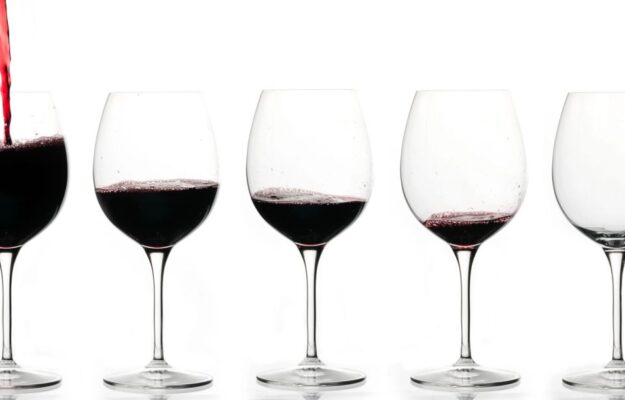The 77th Assoenologi Conference held in Cagliari focused on an in-depth analysis from market players in the various leading Countries. Jon Moramarco, Manager of the BW166 Market Research Agency, for the United States, Maximilian Scheld, Managing Director of Weinland Ariane Abaya, one of the most important distributors on German soil, for Germany, Nicholas Moschi, Purchasing Director of Liberty Wine London, for the United Kingdom, and Leo Xiangxin Kong, Italian wine educator, for China.
The USA, the leading Italian and world market, has 50 different markets, as many as there are States in the Union. Post-Brexit United Kingdom has its dynamics and its challenges. Germany, historically a market of quantity rather than value, very low average prices of wines, except for the HORECA (hotels, restaurants, catering) segment, where Italy is the leader. China is the eternal promise with its ups and downs, and is struggling to emerge. These are very different markets in terms of types of consumption, prices, rules and demographic composition of consumers. However, they all have one aspect in common, except (for now) for the large Asian country. They all have registered a more or less substantial drop in consumption, which has pushed and forced the entire supply chain, from production to trade, to work on increasing price positioning and values, to not lose profitability due to smaller quantities of product circulating on the market. “The American market is the largest wine market in the world, but it has gone through big changes since the Pandemic. A large part of wine consumption, and also mixology, has moved to the home. We are now returning to a new normality. Volumes are decreasing, but spending in 2023 grew + 5.2%, to 107 billion US dollars for consumption (71 billion in off-trade consumption, 36 billion in away from home). Wine consumption, in quantity”, Jon Moramarco emphasized, “has probably reached a level that is unlikely to grow further. Looking at Italian wines, we can say that they held their own during the years of the Pandemic, but then there was a bit of a decline, and red wines, especially, lost share. Sparkling wines, on the other hand, Prosecco, first and foremost, are growing, in volume and value, and have reached an average 20 euros per bottle, on the shelf. In general, wines under 10 euros per bottle are decreasing, while those above 10 euros are growing, though slowly, while the segment between 10 and 15 US dollars is dominant”. According to BW166 data, in 2023, 40.2 million 9-liter cases circulated on the US market, down from 46.4 in 2022. According to Nielsen data, the market share among foreign wines was 40.2%, up compared to 36.4% in 2022. Italian wine is still at the top of the preferences on the US market, while the case of consumers is alarming: “20% of Americans drink wine once a week, 14% less than once a week, 29% drink beer and spirits, but do not drink wine, 37% do not drink alcohol”.
In Germany, the numerical scenario changes completely, as Maximilian Scheld explained. “The German market is worth 17 billion euros, the average price per bottle is 2.82 euros, 42% German wines, and the rest imported, Italy in the lead. Eighty-five percent of the market is made up of wines under 5 euros per bottle, on the shelf. 2024 hasn't started well at all, as we are well below pre-Covid levels. The entry level segment dominates the market, as 95% of imported wines are under 5 euros per bottle on the shelf, while premium and super premium categories are declining. In general, red wines that account for 38% of consumption are decreasing, while white wines are growing at around 50%, and sparkling wines, too, at 12%. There are many problems, however; for instance, the fact that over 50% of German wineries have difficulty paying their workers”. In this negative context, though, Italian wine has a separate role. “Italian wine is worth 36% of imported wine, ahead of 24% in Spain and 16% in France. Italy also holds a dominant position on the on-trade market of premium wines”. Puglia (27%), Tuscany (16%) and Veneto (14%) are the Italian Regions that supply the most wine to Germany. And, even though the vast majority of wine passes through mass retail distribution (discount stores account for 37% of the market), it is the small, but important segment of catering that Italian wine must work on growing. The numbers speak for themselves. The average price of a bottle in mass retail is around 2.6 euros, but in restaurants it is 26.4 euros. Here too, the decrease in consumers is alarming. Only 32% of young people between 18 and 25 years old drink alcohol, and therefore also wine, regularly, compared to 44% in 2013 and 70% in 1976.
In the United Kingdom, the trends are not much different, as Nicholas Moschi explained. “Consumption in volume has been in structural decline since 2015, both off and on-trade, and we need to get used to this. However, values are growing, as the average price between 2015 and 2023 grew + 35%, a sign that the focus on quality is increasing. As far as still wines are concerned, in almost all countries they are decreasing, but not Italy, which grew + 5% to 868 million Sterling pounds, an average price of 6.3 euros per bottle”. the most interesting issue is shelf price. Net of a growing excise duty, which today weighs 2.6 Sterling pounds per bottle for wines below 15 percent alcohol content, it has been demonstrated that by spending a few more Pounds per bottle, the value to the producer changes significantly. “Calculate excise duties, logistics, distributor margins and so on”, Moschi explained, “on a bottle that will go on the shelf at 6.56 Sterling pounds, the average market price in mass retail trade, the cost of the wine, and therefore what is paid to the winery, is just 0.63 cents (in a country where private labels are dominant, ed.). This then becomes 1.06 Sterling pounds for a bottle that costs 7.5 pounds, rising to 4.2 pounds for a bottle at the price of 15 Sterling pounds, and 6.5 for a 20 Sterling pound bottle. It is clear that it is convenient for everyone, in this context, that we are drinking less wine, perhaps, but a higher quality and price level”. Again, the scenario between mass retail trade (accounting for 80% of the volume and 70% of the value) and HORECA, which accounts for 20% of the volumes and 30% of the values, is totally different. At the table in a restaurant the average price of wine is 31 Sterling pounds per liter.
Positive signals seem to be coming from China, as Leo Xiangxin Kong, ambassador of several Italian wineries in the Country. explained. “Chinese customs data for the period January-March 2024 revealed that overall wine imports in China have started to grow again, in 2023. We have 59.7 million liters, +3%, of which 27.6 bulk wine (+21.2%), 30 bottled wine (-9.3%), 0.8 of bag in box (+60%), and 1.1 million liters of sparkling wines (+6.5%). The numbers say that growth is now returning, after 5 years, in volume, although bottled wine is decreasing in quantity. Value is also decreasing, at 245 million US dollars, -11%. In March, especially, imports of bulk wine were higher than bottled wine, “but this is not a negative figure. On the contrary, it means that not only the richest people are starting to drink wine, and in the future they will look for higher quality and price”. Returning to the numbers, between January and March 2024, Italy was China's third wine supplier, at 2.7 million liters, -11.7%, and 23 million US dollars, which means +1.5%, at a average price per liter of 8.3 US dollars. France is in the lead (9.5 million hectoliters for 91 million US dollars, at 9.5 US dollars per liter, but down in both parameters more than -22%), and then Chile, at 8.3 million liters (+23%), 36.7 million US dollars (+5.9%), at 4.3 euros per liter.
The sparkling wine category, instead, puts Italy in first position as supplier in volume, at 706.067 liters (+58%) and 2.8 million US dollars (+31.6%), behind France at 224.704 liters (-33.7%), and 9.4 million US dollars (-20.7%), at 4.21 euros per liter, while Italy instead, is at 4 euros per liter. “Prosecco is also soaring in China, as many people are looking for a cheaper alternative to Champagne”,Leo Xiangxin Kong emphasized. This means that the Chinese market is in recovery phase, although there are some differences. “The Chinese market is not all the same, as it is a huge country - it is the third largest in the world in terms of surface area. There are many ethnic groups and different traditions, including cuisine, which also affects the wine market. For instance, in Northern China red wine is very good, while in the East and South white wine is very good. It’s a very big market, and you need to know it well, before entering. If you don't have a clear project, it's better to wait”.
The picture depicted from the numbers and the opinions of the experts is always complex. On the one hand, it is troubling, but on the other, it shows that Italian wine is healthy, overall, compared to the rest of the market. And, the numbers in the latest Wine Monitor report, the Nomisma Observatory dedicated to the wine market, seem to confirm as well. According to the report, in the first quarter of 2024 the negative trend of total wine imports continued on the 12 main world markets, representing over 60% of global wine purchases in value, confirming the same trends during 2023. In this negative context, however, even though wine imports from Italy are also showing declines in values and volumes, they have performed better than the general trend. Specifically, in the first three months of 2024 value purchases from Italy in the main world markets fell, cumulatively, -0.9%, compared to a general -8.7% decrease.
“In the first quarter of this year, compared to the same period of the previous year, on a cumulative level, imports on the main International markets decreased almost everywhere. In terms of value, the only exception was registered in Brazil, while in terms of volume, only the The United States, China and the United Kingdom have shown improvement compared to the first quarter of 2023”, Denis Pantini, Nomisma Wine Monitor Manager, commented, “furthermore, regarding Italian wines, specifically, overall performances were less negative than the average, thanks to the United States, the United Kingdom, Canada and China, which showed growth in values of wine imports from our Country”. In this context of a general decline in imports, different trends have been registered in the different categories. As a mater of fact, on one hand, Italian still and sparkling wines show a “cumulative” decline in value and volume, while on the other hand, sparkling wines show +4.9% and +3.4% respectively, and positive performances in most of the 12 markets taken into consideration in the Wine Monitor report. In particular, our bottled still and bubbly wines showed significantly lower performances, in 2023, in Germany, France and South Korea, while imports of sparkling wines from Italy showed very good growth in the United Kingdom, France, Canada, Australia and China. Finally, the average prices of Italian still and bubbly wine imports remained at the same level as the previous year, while there were slight increases in sparkling wines.
Copyright © 2000/2025
Contatti: info@winenews.it
Seguici anche su Twitter: @WineNewsIt
Seguici anche su Facebook: @winenewsit
Questo articolo è tratto dall'archivio di WineNews - Tutti i diritti riservati - Copyright © 2000/2025


























































































































































































